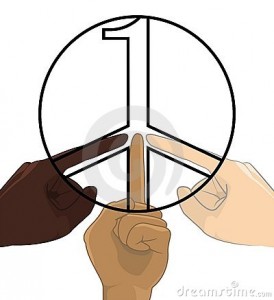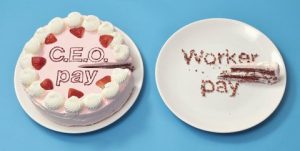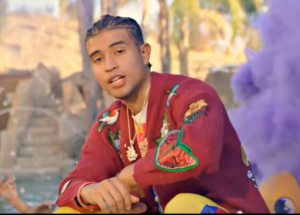By Mary Liston Liepold
Peace X Peace
One statement calls racism and xenophobia “the most serious threat to world peace and therefore to the human right to peace.” Do you agree?
***
Mahatma Gandhi and Martin Luther King, Jr., probably the best-known peacebuilders in the US, if not the world, were both people of color. Yet if you go to a peace rally or a meeting of a peace organization in most US neighborhoods, you’ll see a rather notable preponderance of pale.

What’s up with this?
First let me acknowledge that this is my personal observation, unsupported by statistics, and that (by the same subjective gauge) it’s less true than it used to be. The peace movement is not a formal institution, so stats are hard to come by. I’ve done internet research (some of which I’ll share in the sidebars) and asked a few of you how it looks from where you sit, but I’d love to hear from others.
Assuming this subjective impression is correct, the questions include why and what to do about it. Two women I admire, one African American and one an American Muslim, will describe what they do about it in the next segments. But maybe a few sub-questions need to be raised first.
Is the issue race or class?
Those in the 99% who are working two or three jobs to make ends meet don’t have much time for meetings, and those who aren’t working may be either too busy looking for work or too discouraged to engage. What’s more, the “invisible knapsack” of privileges I wear to demonstrations and everywhere I go as a white American includes a get-out-of-jail card that many immigrants and minority citizens don’t have.
And what movement am I talking about, exactly? Is there one movement or a lot of them? How do we decide who’s in and who’s out of the peace movement, when some of us work at the level of personal peace and others shape national and international policy?
Is my yoga teacher a peacebuilder? I think she is. If we add all the good people who work to strengthen the pillars of peace, like education and economic empowerment, maybe the movement is more diverse than I think. What do YOU think?
I’m writing to raise questions and invite your partnership in searching for answers, so this is at best a shallow introduction to a deep and knotty issue. The only assertion I’m out to make is that it behooves us as people of peace to be actively welcoming and inclusive and to commit ourselves to uprooting racism from our societies and ourselves. Opening our eyes to its pervasiveness is an important first step.
In 2009, 163 international NGOs signed on to an Asian Legal Resource Center statement, “The Human Right to Peace vs. Racism,” addressed to the 10th session of the UN Human Rights Council. The statement grew out of consultations on the Universal Declaration of the Human Right to Peace linking racism and peace. It calls racism and xenophobia “the most serious threat to world peace and therefore to the human right to peace.”
That’s strong language. Do you agree? Disagree?




